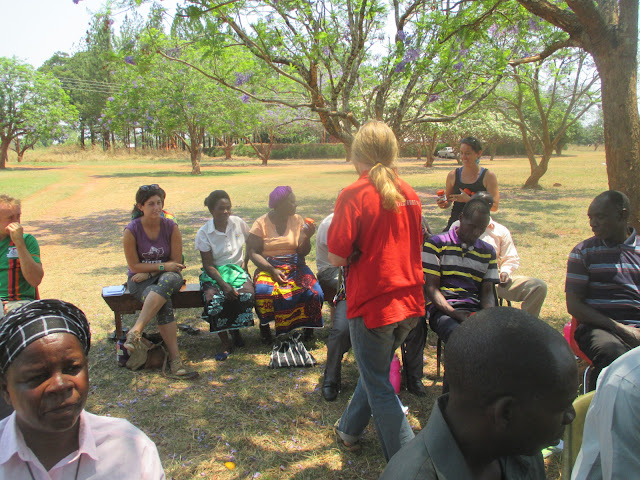Harrison is the village carpenter and am in awe of his work. He makes his own planks which is demonstrated by the photos below.
Beds, caskets, doors...these are the products Harrison builds for people who live in the community. If the village did not have Harrison, community members would have to travel to town to purchase low-quality wood products--usually mass-produced by unskilled workers--made of pine wood which does not last long due to termites which are a serious problem in the bush.
Harrison demonstrating using plum lines of ink to create lines on the log for to be sawed into planks.
Once the lines are placed on both sides of the log it is then lifted onto a scaffold to be sawed with a pit saw. The plumb lines are followed while sawing the planks.
After sawing the planks, the planks are then planed to the proper size and smoothed. When finished you wouldn't be able to tell his planks from planks made from a sawmill.
This tool helps measure the thickness of the plank. There is a line etched into the plank which indicates how much wood is to be removed to make the plank the correct size.
Sometimes a lot of wood is to be removed to lessen planing and uses an axe-like tool to remove the excess.
Harrison with his wife and one of his sons. He has nine children; most are grown and living on their own.
Harrison's home. Notice his roof is tin instead of thatch. Tin roofs are sought after in the village because they are more durable than thatch. Tin roofs are weighted down by rocks and bricks to keep them in place.















































